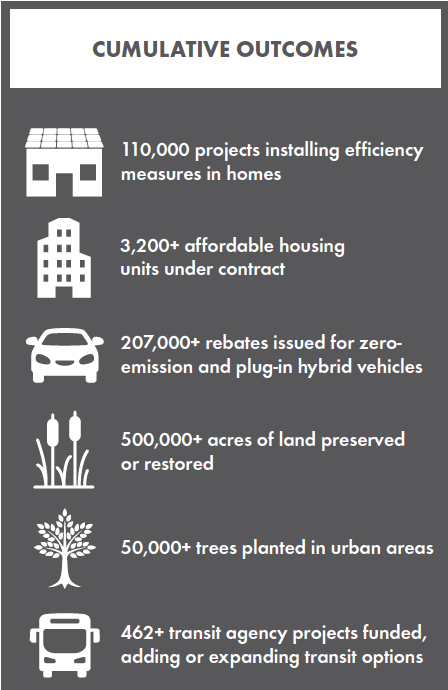The most recent auction in California's cap-and-trade program, which puts a price on emissions, showed a strong market for carbon allowances now and into the near future. The California Air Resources Board announced this week that the money from those auctions is being invested at a quickening pace.
In the first six months of 2019, twenty state agencies deployed over $900 million towards projects aimed at reducing climate pollution.
CARB reports that 32,700 new projects are receiving money from the California Climate Investments funds through sixty different programs. Many of those are rebates and incentives for zero emission and plug-in hybrid vehicles, including private cars, buses, trucks, and farm equipment. There are also investments in:
- affordable housing built near transit
- transit fare subsidies and streamlining
- transit service and bus stop improvements
- electric vehicle car-share
- home weatherization
- water and energy-efficient appliances and farm irrigation systems
- solar power installations for disadvantaged households.
Other recent investments include supporting low-emission farming practices and conservation management to improve soils and reduce fertilizer use, and improving the resiliency of California's forests to help reduce the risk of wildfires.
As the programs under the California Climate Investments portfolio have been developed and their guidelines adopted and updated over time, the entire process has become more streamlined, and the nearly $1 billion that went out in the first six months of 2019 are a new benchmark. In 2018, for example, $1.4 billion was invested over the entire year, and $720 million in all of 2017.
More details can be found in the California Climate Investments Annual Report to the Legislature.
The projects can also be viewed on an online map that is regularly updated.






